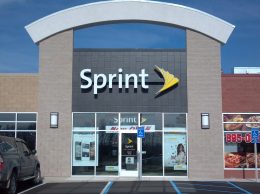The blockbuster deal that would combine Comcast Corp. and Time Warner Cable was nudged forward Feb. 13 when the California Public Utilities Commission released a recommendation that the deal be approved within its jurisdiction — albeit with heavy stipulations.
The CPUC’s conditions now hinge on a corresponding approval from the U.S. Federal Communications Commission and Department of Justice. The date for the FCC’s ruling on the $45 billion deal that would allow Comcast to absorb Time Warner has been pushed back to Aug. 12 from March.
At stake is a merger that would more than double the size of Comcast’s market in California, taking its share of households statewide from 33.7 percent to 84 percent — a significantly larger share than the 60 percent of households the combined company would serve nationwide.
Currently, the only tri-county area served by Comcast is North Santa Barbara County, but a Time Warner merger would be a broadband game-changer for the region. Most of Ventura County falls under Time Warner, excluding select strips that include the city of Ventura operated by Charter Communications, which also provides service throughout San Luis Obispo County.
The consolidation of Charter’s California customers under Comcast is also on the drawing board. If the deal goes through, South Santa Barbara County, served by Cox, will be the only area within the region that doesn’t fall under Comcast.
In its decision, the CPUC found that Time Warner customers would likely experience poorer customer service, less reliable connections and fewer program choices and services “as a result of the merger if [the] transaction is approved without conditions.” To that end, it tacked 25 conditions onto its approval centered on setting diversity benchmarks, expanding access and upgrading infrastructure.
In a response, Comcast Executive Vice President and Chief Diversity Officer David Cohen said while the company can work with a number of the requirements, others “could potentially prevent the full benefits of this transaction being realized by Californians, and create a more intrusive regulatory regime where innovative services could be hampered rather than helped.”
But regulatory officials fear Comcast’s existing infrastructure would further cripple communities underserved with Internet access. As proposed, the deal is likely to grow the digital divide for lower-income subscribers, especially as Comcast’s previous efforts in the area have yielded “weak performance,” the CPUC decision says.
The expectation is that Comcast will expand its Internet Essentials program, which provides households with at least one child enrolled in a school lunch program with 5 Mbps Internet access and a free Wi-Fi router for $9.95 a month.
The program was, ironically, an FCC condition of Comcast’s prior merger with NBC Universal and has enrolled only 46,000 California households so far. Under the CPUC provisions, the company must broaden qualification criteria and enroll at least 45 percent of eligible households within two years of the deal’s close while minimizing barriers to access such as long wait times.
Additionally, Comcast would be required to offer stand-alone broadband Internet service alongside its de-facto bundle of cable TV, Internet and phone service in a more expensive package.
Cohen said some of the conditions extend beyond the CPUC’s authority or are “unrealistic.” This includes a stipulation that the company must upgrade its infrastructure to make broadband available in all California households where Comcast and Time Warner currently only provide cable TV.
The ruling also said that since both Comcast and Time Warner are notorious for lackluster customer service, they will have to provide reports detailing “any complaints about customer service for voice and broadband customers, including, but not limited to, complaints about Comcast employee rudeness or slow action to allow customers to change or drop Comcast services.”
Philadelphia-based Comcast, which operates in 39 states and Washington, D.C., is already the largest provider of broadband and cable in America. Meanwhile Time Warner, with headquarters in New York City, has a presence in 31 states and is the second-largest provider of cable service and third-largest provider of broadband service in California.
The combined company would control roughly 40 percent of the nation’s broadband market. Plus, Comcast would control 92 percent of the top 25 service areas identified by the Satellite Broadcasting & Communications Association as the country’s most lucrative markets including San Francisco, L.A. and New York City.
To bring the merged firm’s number of subscribers in line with antitrust regulation, Comcast will divest nearly 4 million residential cable TV customers in the Midwest to Charter Communications. Charter, meanwhile, will give the merged company all its business telecom customers within California except those in the Lake Tahoe area.
It’s no surprise, then, that federal regulators would take their time weighing the industry-shattering decision. The FCC took more than a year to approve Comcast’s recent acquisition of NBC Universal, as well as Time Warner’s merger with AOL.
The deal is also being negotiated in a climate of shifting net neutrality regulations. The FCC is set to vote on Feb. 26 on proposed revisions to its existing broadband rules to ensure all Internet traffic is treated equally.
FCC Chairman Tom Wheeler has proposed broadband Internet be reclassified as a Title II telecom service, the designation given to phone companies, to be able to govern the service as a utility. It also seeks to raise the standard broadband speed from 4 Mbps to 25 Mbps, making the landscape for high-speed Internet less competitive.
Wheeler has promised the FCC would ultimately limit its reach, however, and not be able to set price controls or bundling restrictions. Meanwhile, Comcast is one of the biggest corporate campaigners in Washington, spending $17 million last year alone on lobbying activities.






 Print
Print Email
Email
















